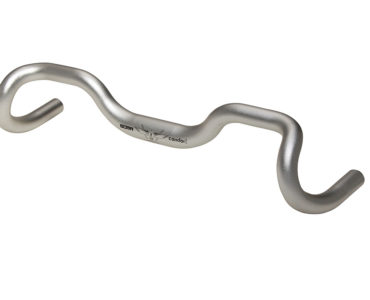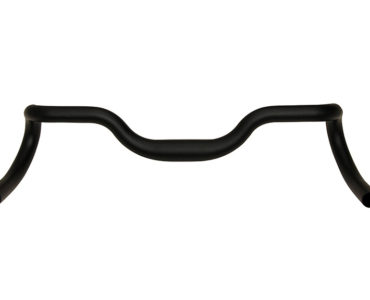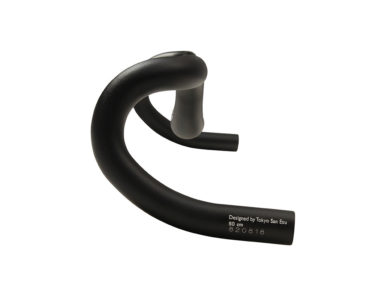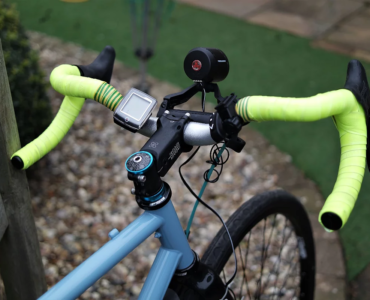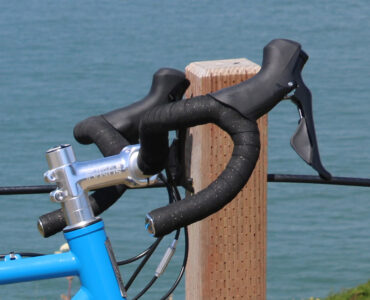Condor 2 Handlebar
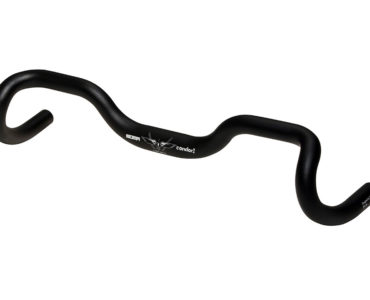
The swoopy Condor 2 is one ambitious alternative drop bar. It combines the features of a compact drop bar with those of a riser bar. With its shallow drop, you'll be able to ride in the drops much longer than other road bars. We removed the backsweep on the original Condor and feel the hand position on top is more useable this way. Try it for touring, bikepacking, and long gravel rides.
Also ideal for upgrading old bikes where the fork steerer has been cut too short to add spacers.
- Shot-peened 6061-T6 Aluminum
- Center: 31.8
- Reach: 63mm
- Rise: 50mm
- Drop: 100mm (50mm net drop with rise added)
- Flare: 14°
- Sizes: SM (38/44cm) MD(40/46cm), LG(42/48cm), XL(44/50cm), XXL (46/52cm)]
Small number is width at the hoods (c-c)
- Weight: 330g
Condor 2 Handlebar
-
Sevenday Cyclist Reviews the Condor 2
[This reviewer has also test-ridden the original Condor] The Soma Fabrications Condor 2 Shallow drop bar is the love child of riser and drop. Aimed at touring, cyclo cross, gravel and commuting audiences, the flared profile is designed so more time, can be spent on the drops. Soma have revised the shape slightly, meaning there’s more useable space, for hands and accessories alike.
Pros: Much improved design, great for rough stuff/touring, gravel riding.
Cons: Quite pricey. Better choices for speed conscious audax and competitive cross.
This time round, the back sweep has been “ironed out” resulting in a flatter top section. Some stats that might help you rule them in/out. Reach is 63mm (previously 52mm), drop 100mm (50mm net) with a 14degree flare.
31.8 bulge diameter is a no brainer, given the brief. Mind you; Soma’s suggestion, that they’re “Also ideal for upgrading old bikes, where the fork steerer has been cut too short to add spacers” may depend on your definition of “old”. Sizes are etched into the ends as before. Small (38/44cm). Medium (40/46cm) Large (42/48cm) and XL (44/50cm).
The slightly deeper drop improved positioning, giving a subtly lower feel to the cockpit, but with no trade off in terms of control, or comfort. These still encourage a drops-first stance; but little adjustments are crucial to avoiding fatigue on longer rides.
The slight skittishness, I noted when alternating between drops and tops, with the original has been a moot point, with the MK2. Regardless whether I was hustling along a descent; or trickling through rush hour traffic.
Oodles of leverage means its easy to weave a slalom around pockmarked roads and lanes, although round town, I’ve depended on my ‘crosser’s disc brake more readily. You’re not going to flick around holes, as you might with a cut down flat, or track bar.
Even with the machine’s moderate cockpit height, I found cruising on the riser sections a bit alien, overly upright. Nonetheless, more natural than the MK1. Rigidity was never a problem and, I’m pleased to report, extended periods of climbing have failed to tax them.
Value
Undeniably well made, and relatively niche, there are several patterns costing considerably less. The Genetic models discussed earlier might be a better starting point. Especially if you are experimenting; or converting an older ‘cross country mountain bike to drops. Similarly, I’d want something with more road heritage, for regular, competitive ‘cross.
Conclusion
Ultimately, contact points are incredibly subjective. For me, the Condor 2 are what the original Condor should’ve been and are the right bar, for my fixed gear winter/trainer and me.
